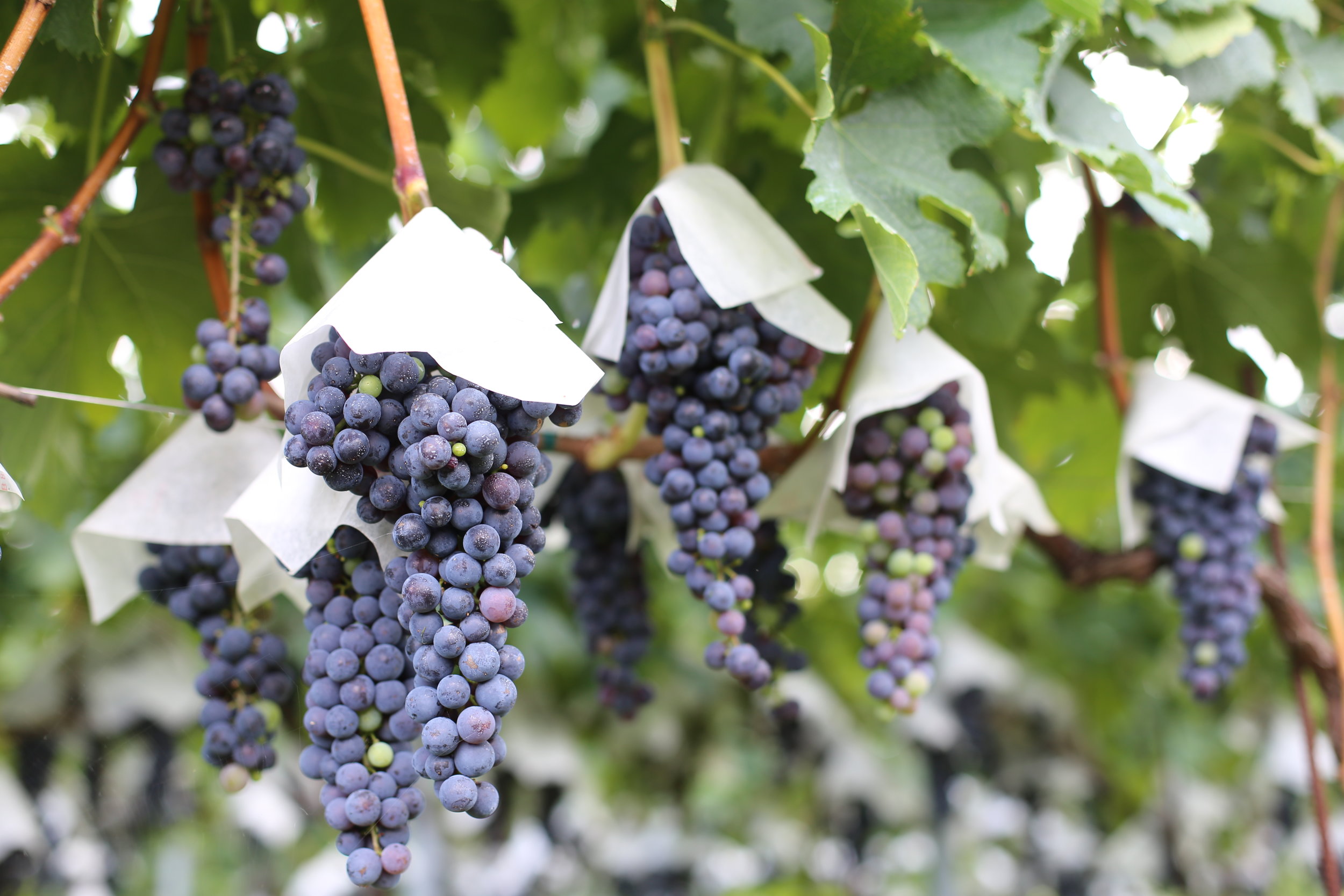The Lay of the Land
A setting like no other
The story of Japanese wine is a story of an area blessed with fertile soils and excellent climate but with land ill-suited to rice, Japan's staple crop. The well-drained soils that made rice cultivation a challenge were perfect for grapes, however. This, combined with its close proximity to Tokyo, gave the Koshu Valley a pivotal role in Japanese agricultural history, producing edible gifts for the elite, rare treats during wartime, and now the wine to put Japan on the world stage.
In geographical terms, the Koshu Valley is an alluvial plain in the northwest of Yamanashi Prefecture, lying between the mountain ranges of the Chichibu-Tama-Kai National Park and the peaks of Mt. Daibosatsu and Mt. Koshu-Takao. The view is framed by the Japanese Alps to the north and Mt. Fuji to the south.
The 756 square kilometer area that makes up the valley and surrounding hills constitutes the largest grape-producing area in Japan and the center of Japanese wine production; of the 300 wineries spread throughout the country, almost a quarter are clustered in the Koshu Valley.
Whilst the surrounding peaks reach heights of 2,000 meters, the majority of vines are grown in the valley at around 300-600 meters above sea level. The grapes bathe in some of the longest hours of sunshine seen anywhere in Japan, while the easterly sasago oroshi breeze from the mountains offers the vines evening respite from the hot summer days. The soil ranges from clay-based and sandy to volcanic, depending on the location.
The Koshu Valley, looking south towards Mt. Fuji.
The majority of grape varieties grown in the Koshu Valley are unique to Japan. The dominant varieties are the eponymous Koshu grape for white wine and Muscat Bailey A for red, both of which are registered with the OIV (International Organisation of Vine and Wine).
A typical vineyard scene by a small river in Katsunuma.
An internationally diverse array of grapes is also grown on a smaller scale. Among the international grape varieties, Merlot, Cabernet Sauvignon, Pinot Noir, Cabernet Franc, Petit Verdot and Syrah are grown in the area, as is Chardonnay.
Historically, American varieties have proved popular as they grow well here: Delaware, usually considered a table grape, was introduced to Yamanashi in 1886 and is occasionally made into wine, as are Concord, Niagara and Adirondac grapes. Other local grape varieties include Black Queen, Yamabudo, Kyoho and Pione.
With some recent exceptions, vines are trained on overhead pergola-style trellis, an historic method that allows air to circulate around the grapes and helps shield them from summer rainfall.
A Uniquely Japanese environment
Even international grapes grown with European-style vertical trellising wear hats in the Koshu Valley.
Individual plots of land are small compared to other grape-growing regions of the world and the majority of wine makers have contracts with multiple growers, sometimes dozens. This arrangement gives the Koshu Valley much of its unique character - the landscape is a patchwork of small vineyards, vines stretching from the eaves of farm houses and covering entrance ways and gardens. In a uniquely Japanese touch, many of the grapes wear origami paper hats called kasa, which help protect them from the elements.
The valley encompasses three settlements - Koshu, Yamanashi and Fuefuki. Space is used efficiently and farmland is dotted with homes, schools, businesses, restaurants and other amenities, making it a charming yet convenient place to explore.
The past and present center of wine production is Katsunuma, part of Koshu town, where wine has been made for 140 years. This main area can be easily explored on foot or by bicycle, while the rest of the valley can be navigated by car or public transport.
Year-round charm
The region has four distinct seasons. Spring is alive with the colour of cherry, peach and plum blossom as the fresh vine shoots emerge. Summers are hot and humid yet verdant, the vines forming a quilt over the valley. Autumn sees the mountains glow with autumn leaves as the canopies of vines in the valley turn copper, and winters, although cold and dry, are brightened by rows of persimmons hanging in the sun under the eaves.
Persimmons drying under the eaves in winter.
In summer the soundtrack to your visit is a chorus of cicadas. Whatever the time of year, you are met by the burble of picturesque channels of mountain water that run alongside the labyrinth of vineyard paths, fed by the Hikawa, Omogawa and Fuefuki rivers that intersect the valley.





